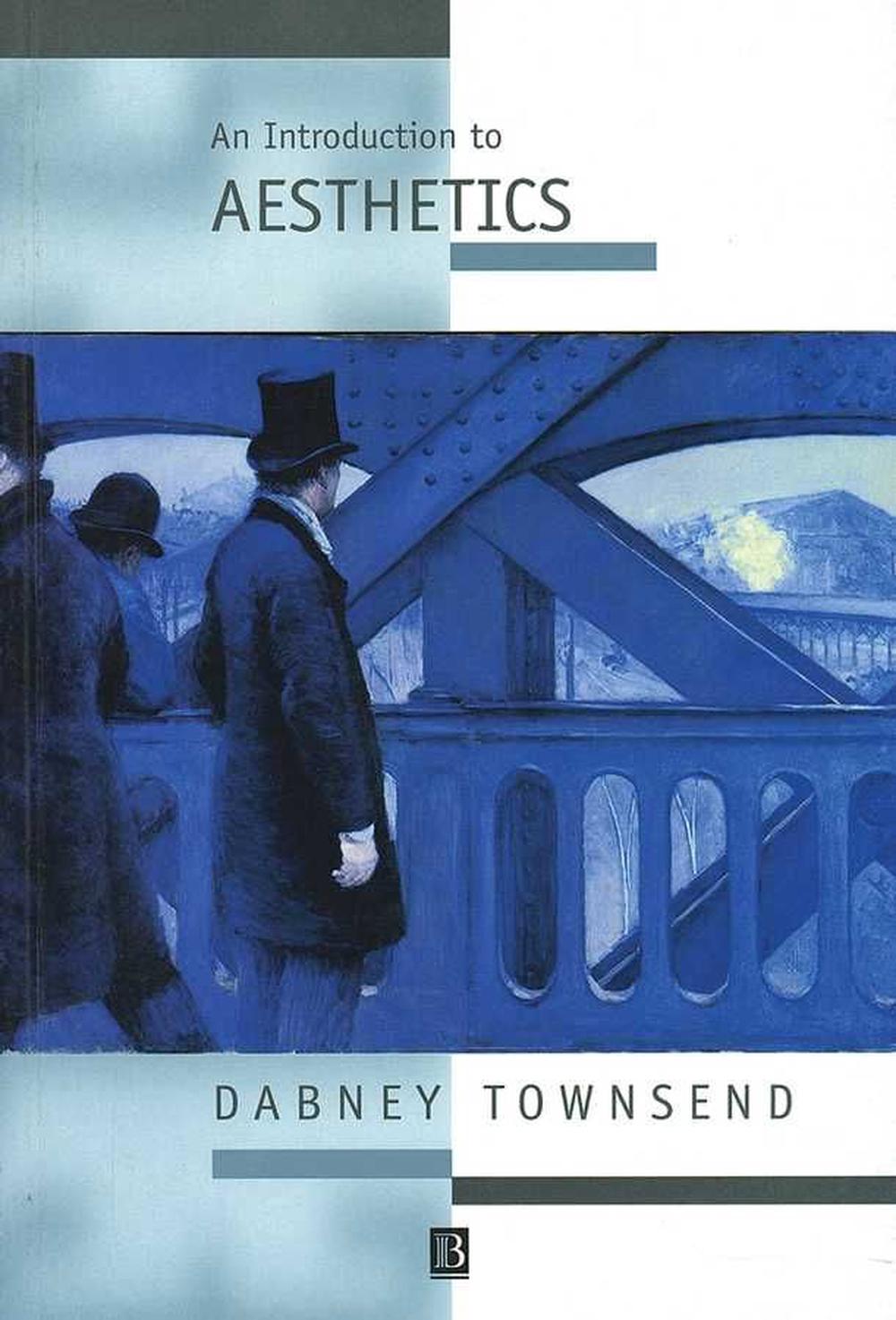
When you click on links to various merchants on this site and make a purchase, this can result in this site earning a commission. Affiliate programs and affiliations include, but are not limited to, the eBay Partner Network.
An Introduction to Aesthetics by Dabney Townsend (English) Paperback Book

- Item No : 388159052907
- Condition : Brand New
- Brand : No brand Info
- Seller : the_nile_uk_store
- Current Bid : US $66.65
-
* Item Description
-
The Nile on eBay

An Introduction to Aesthetics
by Dabney Townsend
A comprehensive, systematic approach to the subject. Written for the philosophical novice. Includes an appendix containing the texts referred to in the book as well as further reading suggestions and a comprehensive glossary.
FORMAT
PaperbackLANGUAGE
EnglishCONDITION
Brand New
Publisher Description
This volume is a fascinating introduction to the core themes and basic methods of aesthetics and the philosophy of art. Providing an analytic and historical treatment of the issues, and including many illustrative examples to both motivate and reinforce theoretical discussion, An Introduction to Aesthetics is the ideal course book for the philosophical novice. It includes an Appendix (containing the texts referred to in the book), a comprehensive Glossary and further reading suggestions to help the student reader develop a deeper comprehension of the field.
Back Cover
This volume is a fascinating introduction to the core themes and basic methods of aesthetics and the philosophy of art. Providing an analytic and historical treatment of the issues, and including many illustrative examples to both motivate and reinforce theoretical discussion, An Introduction to Aesthetics is the ideal course book for the philosophical novice.Beginning with definitions of aesthetic questions and language, the author then goes on to examine relations between artist, work of art and audience, whilst throughout developing three important aesthetic theories which compete for philosophical attention: participatory aesthetics, aesthetic experience, and theory of response and institutional activity. In this way, the author encourages an understanding of aesthetic theory, whether, and to what extent, it is possible, and what the alternatives might be. The book also includes an appendix (containing the texts referred to in the book), a comprehensive glossary and further reading suggestions to help the student reader develop a deeper comprehension of the field.
Flap
This volume is a fascinating introduction to the core themes and basic methods of aesthetics and the philosophy of art. Providing an analytic and historical treatment of the issues, and including many illustrative examples to both motivate and reinforce theoretical discussion, An Introduction to Aesthetics is the ideal course book for the philosophical novice. Beginning with definitions of aesthetic questions and language, the author then goes on to examine relations between artist, work of art and audience, whilst throughout developing three important aesthetic theories which compete for philosophical attention: participatory aesthetics, aesthetic experience, and theory of response and institutional activity. In this way, the author encourages an understanding of aesthetic theory, whether, and to what extent, it is possible, and what the alternatives might be. The book also includes an appendix (containing the texts referred to in the book), a comprehensive glossary and further reading suggestions to help the student reader develop a deeper comprehension of the field.
Author Biography
Dabney Townsend is Professor of Philosophy and Chair of the Department of Philosophy and Humanities at the University of Texas at Arlington. He has written extensively in the field of aesthetics, particularly on the developments in aesthetics in the eighteenth century, and has recently edited Aesthetics: Classic Readings in Western Tradition (1996).
Table of Contents
List of Acknowledgements. Introduction. 1. Language About Art and Aesthetics. Getting Started. Aesthetic Predicates. Criticism and Value Terms. The Problem of Definition. 2. Aesthetic Analysis and Its Objects. Formal Analysis. Aesthetic Objects. 3. The Artist and the Work of Art. The Artist's Intentions. Inspiration. Creativity and Originality. Breaking the Connection Between Artist and Art. 4. The Audience and the Work of Art. Attitudes of the Audience. Critics and Criticism. Institutions and the Role of the Audience. 5. The Artist and the Audience. The Aesthetics of Reception. Mythpoesis: Myth and Ritual. Institutional and Post-Institutional Aesthetics. Appendix. Glossary. Index.
Review
"This is a dependable, well-informed and accessible guide to the complexities of contemporary philosophical aesthetics. In taking a problem-oriented, rather than historically-based, approach the book directly engages with core issues in the subject. What emerges is not just an introductory survey of problems but a testament to the vitality and richness of the subject itself. I recommend the book to beginners and more advanced readers alike." Professor Peter Lamarque, British Journal of Aesthetics
"A highly reader-friendly guide. It is a clearly and attractively written work which will provide a very reliable text for many university courses on the subject. At the end of each chapter there are excellent, and bang-up-to-date, suggestions for further reading and there is a useful glossary of terms used in the text at the end."Long Description
This volume is a fascinating introduction to the core themes and basic methods of aesthetics and the philosophy of art. Providing an analytic and historical treatment of the issues, and including many illustrative examples to both motivate and reinforce theoretical discussion, An Introduction to Aesthetics is the ideal course book for the philosophical novice. Beginning with definitions of aesthetic questions and language, the author then goes on to examine relations between artist, work of art and audience, whilst throughout developing three important aesthetic theories which compete for philosophical attention: participatory aesthetics, aesthetic experience, and theory of response and institutional activity. In this way, the author encourages an understanding of aesthetic theory, whether, and to what extent, it is possible, and what the alternatives might be. The book also includes an appendix (containing the texts referred to in the book), a comprehensive glossary and further reading suggestions to help the student reader develop a deeper comprehension of the field.
Review Text
"This is a dependable, well-informed and accessible guide to the complexities of contemporary philosophical aesthetics. In taking a problem-oriented, rather than historically-based, approach the book directly engages with core issues in the subject. What emerges is not just an introductory survey of problems but a testament to the vitality and richness of the subject itself. I recommend the book to beginners and more advanced readers alike." Professor Peter Lamarque, British Journal of Aesthetics
"A highly reader-friendly guide. It is a clearly and attractively written work which will provide a very reliable text for many university courses on the subject. At the end of each chapter there are excellent, and bang-up-to-date, suggestions for further reading and there is a useful glossary of terms used in the text at the end."Review Quote
This is a dependable, well-informed and accessible guide to the complexities of contemporary philosophical aesthetics. In taking a problem-oriented, rather than historically-based, approach the book directly engages with core issues in the subject. What emerges is not just an introductory survey of problems but a testament to the vitality and richness of the subject itself. I recommend the book to beginners and more advanced readers alike." Professor Peter Lamarque, British Journal of Aesthetics "A highly reader-friendly guide. It is a clearly and attractively written work which will provide a very reliable text for many university courses on the subject. At the end of each chapter there are excellent, and bang-up-to-date, suggestions for further reading and there is a useful glossary of terms used in the text at the end."
Feature
* A comprehensive, systematic approach to the subject.
* Written for the philosophical novice.
* Includes an appendix containing the texts referred to in the book as well as further reading suggestions and a comprehensive glossary.Details
ISBN1557867313Author Dabney TownsendShort Title INTRO TO AESTHETICSSeries Introducing PhilosophyLanguage EnglishISBN-10 1557867313ISBN-13 9781557867315Media BookFormat PaperbackDEWEY 111.85Series Number 5Birth 1941Affiliation University of Texas, ArlingtonPages 260Illustrations black & white illustrationsEdition 1stDOI 10.1604/9781557867315UK Release Date 1997-10-05AU Release Date 2002-03-01NZ Release Date 2002-03-01Publisher John Wiley and Sons LtdYear 1997Publication Date 1997-10-05Imprint Wiley-BlackwellPlace of Publication HobokenAudience UndergraduateUS Release Date 1997-10-05Country of Publication United Kingdom


-
- NO GRID Survival Projects
- $ 37.00
















